Slim leren, zeker slagen
INCLUSIEF ONLINE OMGEVING
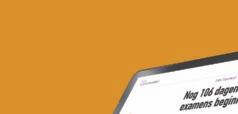





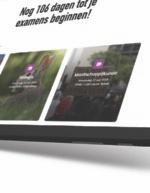




INCLUSIEF ONLINE OMGEVING



























Oefen met echte examenopgaven per onderwerp en met complete examens. In het boek en online.
Oefenen, oefenen, oefenen
Uitleg b� de antwoorden
Oriëntatietoets geeft aan hoe je ervoor staat
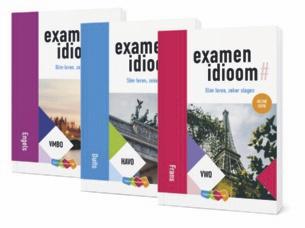
Speciaal voor de examens Duits, Engels en Frans.
Een grote woordenschat zorgt voor beter tekstbegrip
Duidel� ke voorbeeldzinnen
Ook voor de schoolexamens
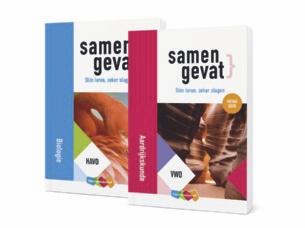
De perfecte samenvatting om je voor te bereiden op je examen.
Zo leer je precies wat je moet weten.
Complete examenstof
R� tjes en defi nities
Geen lappen tekst






Zo leer je efficiënter leren.
J e leert hoe je moet leren
Hulp b� plannen
Je kr� gt zelfi nzicht en zelfvertrouwen
Tineke van Putten Riek Verploegh
2025 2026
Auteurs
Tineke van Putten
Riek Verploegh
Redactie
Zarina Rimbaud-Kadirbaks, Wellingborough (VK)
Omslagontwerp
Studio Fabienne, Hoevelaken
Vormgeving
Studio Michelangela, Utrecht
Opmaak
Crius Group, Hulshout
Over ThiemeMeulenhoff
ThiemeMeulenhoff is een educatieve uitgeverij die zich inzet voor het voortgezet onderwijs en beroepsonderwijs. De mensen van ThiemeMeulenhoff zijn er voor onderwijsprofessionals met ervaring, expertise en doeltreffende leermiddelen. Ontwikkeld in doorlopende samenwerking met de mensen in het onderwijs om samen het onderwijs nog beter te maken.
We ontwikkelen lesmethodes die goed te combineren zijn met andere leermiddelen, naar eigen inzicht aan te passen en bewezen effectief zijn. En natuurlijk worden al onze lesmethodes zo duurzaam mogelijk geproduceerd.
Zo bouwen we samen met de mensen in het onderwijs aan een mooie toekomst voor de volgende generatie. Samen leren vernieuwen.
www.thiememeulenhoff.nl
Boek ISBN 978 90 06 99360 8
Pakket ISBN 978 90 06 99188 8
Editie 1, druk 1, oplage 1, 2025
© ThiemeMeulenhoff, Amersfoort, 2025
Alle rechten voorbehouden. Tekst en datamining, AItraining en vergelijkbare technologieën niet toegestaan. Niets uit deze uitgave mag worden verveelvoudigd, opgeslagen in een geautomatiseerd gegevensbestand, of openbaar gemaakt, in enige vorm of op enige wijze, hetzij elektronisch, mechanisch, door fotokopieën, opnamen, of enig andere manier, zonder voorafgaande schriftelijke toestemming van de uitgever.
Voor zover het maken van kopieën uit deze uitgave is toegestaan op grond van artikel 16B Auteurswet 1912 j° het Besluit van 23 augustus 1985, Stbl. 471 en artikel 17 Auteurswet 1912, dient men de daarvoor wettelijk verschuldigde vergoedingen te voldoen aan Stichting Publicatie en Reproductierechten Organisatie (PRO), Postbus 3060, 2130 KB Hoofddorp (www.stichtingpro.nl). Voor het overnemen van gedeelte(n) uit deze uitgave in bloemlezingen, readers en andere compilatiewerken (artikel 16 Auteurswet) dient men zich tot de uitgever te wenden. Voor meer informatie over het gebruik van muziek, film en het maken van kopieën in het onderwijs zie www.auteursrechtenonderwijs.nl.
De uitgever heeft ernaar gestreefd de auteursrechten te regelen volgens de wettelijke bepalingen. Degenen die desondanks menen zekere rechten te kunnen doen gelden, kunnen zich alsnog tot de uitgever wenden.
Deze uitgave is volledig CO2neutraal geproduceerd.
ClimatePartner certified product climate-id.com/YI43H3
CO2 measure reduce contribute
De eerste stap om vol vertrouwen je examen voor dit vak in te gaan heb je gezet!
Deze Examenbundel is namelijk de beste voorbereiding, omdat je oefent met echte examenopgaven. Kijk hoe het werkt.
Je Examenbundel bestaat uit verschillende delen:
• Deel 1 – De oriëntatietoets: krijg snel een eerste indruk hoe je scoort op de verschillende eindtermen.
• Deel 2 – Voorbereiding op het examen: de belangrijkste theorie en informatie op een rijtje.
• Deel 3 – Oefenen met examenteksten: het echte werk!
Opbouwen met oefenen
Deze Examenbundel helpt je op verschillende manieren bij het oefenen:
• Alle examenteksten zijn gerangschikt naar moeilijkheidsgraad (één, twee of drie sterren). Je kunt dus opbouwen van makkelijke naar moeilijke teksten.
• De examenteksten in onderdeel E en F zijn voorzien van woordenlijsten. Hierin staan de lastige woorden uit de tekst. De vertaling helpt je om de tekst beter te begrijpen. De antwoorden op de vragen staan op mijnexamenbundel.nl.
• De examenteksten in onderdeel G, H en I hebben een oriëntatie vooraf. Deze helpt je om snel een eerste indruk te krijgen van de tekst.
• Je kijkt de examenteksten in onderdeel G, H en I na met de uitgebreide uitwerkingen achterin. Daarin staat het juiste antwoord. Maar belangrijker: je krijgt duidelijke uitleg waaróm dit het juiste antwoord is en hoe je daar komt.
• Het examen in onderdeel J kun je zien als de generale repetitie voor het echte examen. De antwoorden en uitwerkingen staan op mijnexamenbundel.nl.
Bij dit boek hoort een online omgeving: mijnexamenbundel.nl. Het boek en Mijn
Examenbundel werken met elkaar samen.
Maak de balans op
• oriëntatietoets maken
• hele examens maken
• nakijken oriëntatietoets
• nakijken hele examens
Je scores worden bewaard!
Leren en oefenen
Ook handig
• oefenen met examenteksten
• basiswoordenlijst
• register op thema
• extra oefenen op moeilijkheid
• uitlegvideo’s
Je ziet je voortgang!
• overzicht van de examenstof
• quickscan
• examentips
Alle belangrijke info bij elkaar!
Om optimaal gebruik te maken van boek én website, verwijst het boek op handige plekken naar mijnexamenbundel.nl
Voorbeeld:
Wil je weten hoe je de toets hebt gemaakt? De antwoorden staan op mijnexamenbundel.nl. Vul je punten in en bekijk je score per onderwerp. Je scores worden bewaard.
Ga nu naar mijnexamenbundel.nl en maak meteen je account aan. Met de activatiecode die je per mail hebt ontvangen of via de ELO van je school, heb je toegang tot alle extra’s die bij je boek horen.



































Wil jij je nóg beter voorbereiden op het eindexamen? Combineer Examenbundel dan met Examenidioom — vergroot je woordenschat voor betere scores op je talenexamens.
Heel veel succes!
Namens team Examenbundel heel veel succes met je examens! #ikgazekerslagen #geenexamenstress
Heb je een vraag of opmerking over deze Examenbundel? Ga dan naar examenbundel.nl/contact.
Opmerking
De overheid stelt de regels op voor het examen. Bijvoorbeeld wat de examenonderwerpen zijn, welke hulpmiddelen je mag gebruiken en wanneer het examen is. De auteurs en uitgever hebben deze Examenbundel met grote zorg samengesteld. Soms veranderen de regels van de overheid echter of worden er nieuwe afspraken gemaakt over wat die regels betekenen. Raadpleeg daarom altijd je docent of onze website www.examenbundel.nl voor actuele informatie die voor jouw examen van belang is.
A
1 Groot-Brittannië
2 Verenigde
1 Zelfstandige
F 2023-II met woordenlijsten 1 Examen
6 Werkwoorden
1 Examen
2 Examen
3 Examen
4 Examen
5 Examen
6 Examen
7 Examen
8 Examen
12 Examen
13 Examen
I 2024-II met uitwerkingen
1 Examen
8 Examen
9 Examen
10 Examen
J 2025-I
1 Examen
4 Examen
De antwoorden en uitwerkingen van examen 2025-I vind je op mijnexamenbundel.nl.
BIJLAGEN
Basiswoordenlijst
Register op thema
Cijferbepaling examens 2023-II, 2024-I en 2024-II
7 Examen
8 Examen
11 Examen
Natuurlijk kun je kriskras door de Examenbundel gaan en met die onderdelen oefenen die jou belangrijk lijken. Je kunt het ook systematischer aanpakken en daar is onderstaand stroomschema voor bedoeld. Het stroomschema leidt je op een slimme manier door de bundel en laat je optimaal profiteren van de mogelijkheden die de Examenbundel je biedt om je leesvaardigheid op peil te brengen. Dan kun je met vertrouwen het centraal examen tegemoetzien.
september en oktober
Bestudeer D1 (Leesvaardigheid).
Nulmeting: maak de oriëntatietoets op bladzijde 13 en verder.
Bekijk het oefenadvies.
Meer dan 4 fout. NEE JA
Bekijk het oefenadvies.
Oorzaak 1: je weet niet hoe je te werk moet gaan.
Oorzaak 2: je begrijpt de meerkeuzevragen niet goed.
Oorzaak 3: gebrek aan woordkennis.
Oorzaak 4: gebrek aan achtergrondkennis van Groot-Brittannië en de VS.
Bestudeer de leesstrategieën (D2) en soorten vragen (D3).
Bestudeer de soorten vragen (D3) en veelvoorkomende woorden in de vraagstelling (D4).
• Leer de basiswoordenlijst (Engels-Nederlands).
• Leer de signaalwoorden (D5).
• Leer de voorvoegsels (D6).
Lees onderdeel A. Test je kennis van land en samenleving op mijnexamenbundel.nl.
Wil je nog meer oefenen? Gebruik Examenidioom.
Oefen met de examenteksten in onderdeel E.
Oefen met de examenteksten in onderdeel G.
Zoek naar de oorzaak en bestudeer de betreffende onderdelen in de bundel (zie het begin van dit stappenplan). Veel fouten.
Maak een heel examen in onderdeel H.
Bereken je cijfer aan de hand van de cijferbepaling achter in de bundel.
Bestudeer de uitwerkingen bij dit examen.
Herhaal nog een keer de signaalwoorden (D5) en de voorvoegsels (D6).
Oefen tot aan het centraal examen verder met hele examens in de onderdelen F, I en J en op mijnexamenbundel.nl.
januari
april
Examen
Hoe zou je het nu al doen op een examen?
De oriëntatietoets geeft je een eerste indruk.
De oriëntatietoets is speciaal ontwikkeld om je een idee te geven hoe je ervoor staat wat het centraal examen betreft. Het centraal examen toetst verschillende leesvaardigheden (eindtermen).
Deze oriëntatietoets
• geeft een globaal beeld van hoe goed of hoe slecht je deze vaardigheden beheerst;
• bestaat uit opgaven uit examens van voorgaande jaren;
• heeft ongeveer de omvang van een half examen.
De antwoorden staan op mijnexamenbundel.nl. Als je daar je punten invult, zie je hoe je scoort per vaardigheid. Met het bijbehorende oefenadvies en het stroomschema op bladzijde 8 en 9 kun je daarna verder werken met de Examenbundel.
(1) For some time, I had rather smugly assumed that the current vogue for young British women to favour jeans with artful tears around the kneecaps reflected a lamentable decline in honest-to-goodness skills such as darning, a subtle protest against the conformity imposed by male hegemony, or perhaps even a resourceful response to a shortage of materials.
(2) But it may simply be a deliberate ploy to expose a tender and not especially attractive part of the anatomy as an inverted expression of solidarity with those members of the sisterhood affected by the ban on burqas and similar garments. If so, it merits wholehearted commendation.
by Glyn Haggett
New Statesman

“the current vogue for young British women to favour jeans with artful tears around the kneecaps” (paragraph 1)
1 How many explanations for this are given in the text?
A 2
B 3
C 4
D 5
“If so, it merits wholehearted commendation.” (paragraph 2)
2 Which of the following does “it” refer to?
A “the current vogue” (paragraph 1)
B “a tender and not especially attractive part of the anatomy” (paragraph 2)
C “the ban on burqas and similar garments” (paragraph 2)
I’m happy to be a Tigress – as long as there’s some fun too
by Anne McElvoy
(1) TRULY, Dave1) , I try to be the Tiger Mum you want us all to be. I have wagged fingers about messy handwriting, imposed Louisa May Alcott and the book chap known to our youngest as “Charles Chickens”. I may be the last parent in north London to hold out against the use of “Me and John” and my 10pm cry to zombie-eyed teens is “Get OFF those devices!”

(2) The Prime Minister thinks parenting classes might help us have higher expectations of our young. If there is one for how to instil urgency into a chap preparing for mock GCSEs by sleeping or a younger sister who gamely tries music exams without remembering to practise scales until the day before, then they are most welcome in my life.
(3) Like most ideas teetering on the brink of parody, this one has a nub of good sense. The Prime Minister is really addressing his comments to teachers who need to aim upwards for children from poorer homes and parents who, having been failed by the education system themselves, find it hard to instil discipline and aspiration into their own children, perpetuating low social mobility.
(4) But criticizing parents is fraught with perils. A young teacher I know tells the delightful story of trying to raise interest among parents in a deprived area in their children’s homework. One single mum proudly told of how rigorous she was about homework, sleep times and reading. “That’s wonderful,” cried my friend, supportively. “I wish you were the mother of all my children.”
(5) Even when the words come out the right way, the flaw in the PM’s approach is that it tries to be all things to all families. Because David Cameron is conscious of his privileged background, he falls into the “me too” trap of suggesting that everyone needs the same thing. But today’s middle-class parents are already vastly ambitious for their children. When you have “got” 11-plus exams, GCSEs or university entrance in the family, a pall falls on everyone else.
(6) Wanting a touch of Tiger syndrome in our approach to education is no bad thing in a world that will get more focused on competition and innovation. 5 I see Asia’s best education thinkers worrying as much over how to encourage and bring enthusiasm and surprise into their rigid systems.
(7) A London headmaster whose name I shall protect from the health and safety police started the recent exam-heavy term by abseiling down into the assembly hall dressed as Superman. How mad, wonderful and memorable. Our schooldays need a twist of that, to offset the Tiger toil.
adapted from Evening Standard
1
3 Which of the following about Anne McElvoy is true based on paragraphs 1-3?
A She feels politicians should not interfere in family matters.
B She is a strong opponent of parenting on a first-name basis.
C She is positive about helping people to better their position in society.
D She supports parenting classes being incorporated into the school system.
4 What message does Anne McElvoy want to convey in paragraph 4?
A aim for transparency
B be cautious
C bestow compliments
D maintain impartiality
E share emotions
F show sympathy
5 Which of the following fits the gap in paragraph 6?
A After all
B In a nutshell
C In fact
D Therefore
E Yet
(1) Sir, The article “Rhino poaching: inside the brutal trade” refers to solutions to rhino poaching (FT Weekend, October 3).
5 10
It was suggested that demand could be removed but only about 1 million Chinese use rhino horn at present and there are some 1 billion traditional Chinese medicine users who may well want to buy horn at lower prices. Removing enough demand seems unlikely.

(2) South Africa spends about $80m a year on rhino anti-poaching ($4,000 per rhino). If we spend more, the chances are that the horn price
to poachers will rise so as to compensate the poachers for the increased risk.
(3) “Flooding the market” makes no sense. But if you can restrict supplies to sustainable levels and also limit demand by controlling the price, you have most of the answer to the problem. A monopoly of supply selling to a cartel of retailers in the Far East would do that.
(4) If East Asian governments are invested in the legal trade, they will close down (most of) the illegal trade. That is the rest of the answer.
(5) South Africa can easily and sustainably satisfy current levels of demand (from stocks, natural deaths and farmed horn) without the need to kill one rhino.
(6) At the wholesale price of $30,000 per kg, African conservation would benefit from a legal trade by $180m a year – money that is needed but is currently going to criminals.
Michael Eustace Director of Bangweulu Wetlands, Zambia, and Majete Wildlife Reserve, Malawi Johannesburg, South Africa
adapted from an article from Financial Times
6 Which of the following statements is in line with Michael Eustace’s opinion?
A Conventional law enforcement has come a long way in fighting the horn trade.
B Demystifying the alleged medicinal powers of rhino horn will help curb demand.
C Introducing commercially bred rhino horn into the supply chain will help satisfy demand.
D Legalising the horn trade would remove the stigma of buying illegal products, thus stimulating demand.
7 Which of the following sentences sums up the article?
A A well-structured legal trade may be the best solution.
B Poachers should be enlisted in the fight against poaching.
C Reducing demand is the next best thing to removing demand.
D South Africa will pay the price for its lax approach to poaching.
Laura Vanderkam
Humans Are Underrated by Geoff Colvin
(1) Generations of parents have faced this dilemma: You want to give your kids career advice, but what, exactly, will be the in-demand and well-paid jobs of the future? In “The Graduate” (1967), the answer was “plastics”; more recently people have suggested professions
that seemingly could not be automated, such as nursing or law. Yet if technology improves exponentially, “it’s dangerous to claim there are any skills that computers cannot eventually acquire,” according to Fortune editor-at-large Geoff Colvin. Computers can drive our cars, search legal documents, and probably write serviceable book reviews.
(2) So are we doomed to uselessness? In Humans Are Underrated Mr. Colvin starts with a litany of our weaknesses, including his own defeat by IBM’s Watson computer in a “Jeopardy!”-like showdown, before he inserts this twist: “In finding our value as technology advances, looking at ourselves is much more useful than the conventional approach, which is to ask what kind of work a computer will never be able to do.”
(3) Humans, it seems, are 10 . We want to work with people and have conversations with people. Even if computers can do things better, there are some actions that we “will simply insist be performed by other humans.” And so “the most valuable people are increasingly relationship workers.”

(4) The rest of the book offers examples of how this relationshiporientation will preserve (or create) future jobs. Algorithms can predict criminal recidivism better than judges, but “it’s a matter of the social necessity that individuals be accountable for important decisions” like sentencing.
(5) 11 , even high-tech-oriented companies such as Google, Mr. Colvin notes, now hire for empathy and people skills. The author details the U.S. Army’s research on the “human domain” – how to get troops to trust each other and their commanders, and how to understand and defuse situations in hostile territory. “To look into someone’s eyes – that turns out to be, metaphorically and quite often literally, the key to high-value work in the coming economy,” writes Mr. Colvin.
(6) As big idea business books go, this one is pretty good. Mr. Colvin weaves original reporting and humor into an intelligent narrative. Of course, as with all such books, it’s easy to overstate the big idea.
(7) Think about IBM’s Watson again. Mr. Colvin asks us to assume that a “perfect mechanical imitation of a human being does not exist in our or our grandchildren’s lifetimes.” But that’s a dangerous assumption, especially as we are still learning what happens on a mechanical level when humans interact. One major finding Mr. Colvin covers: We read nonverbal emotional cues that show up in pupil dilation. What if some inventor can produce a robot whose pupils dilate appropriately as it gazes into a human’s eyes? Then, as humans do, we will anthropomorphize like crazy. We will believe the machine can read our souls.
(8) Then there’s this common business-book foible: The author’s big idea leads, conveniently enough, to currently trendy management advice. Teams are great; collaboration is the future (though Mr. Colvin seems to have written his book without six co-authors). We need more humanities
majors for their empathy and storytelling abilities (though employers peskily keep preferring math and science majors).
(9) Mr. Colvin deems Yahoo CEO Marissa Mayer’s decision to end workfrom-home arrangements to be an innovative choice, even though research finds that working from home can be more productive. That companies need both innovation and productivity gets ignored when overeager leaders assume workers can invent brilliant new products while standing next to one another at the ladies’ room sinks. And yes, I mean the ladies’ room, as Mr. Colvin devotes a whole chapter to how women score higher than men on measures of social sensitivity. The bestperforming teams, he assures us, will be those with the most women. How could companies attract and keep more women? Well, they could let people telecommute but ... hmmm. Maybe Watson can sort that out.
(10) Nonetheless, Mr. Colvin is a shrewd student of human nature. He freely admits that for us underrated humans, “rationality is not our strong suit.” In other words, for those smart enough to understand that our brains don’t change as quickly as technology, there will be many economically valuable niches still to be exploited. In the future a lawyer may not make money by scanning documents, but by “understanding an irrational client,” and “forming the emotional bonds needed to persuade that client to act rationally.” There may even be jobs for corporate poets. Mr. Colvin thinks this is “wonderful news” because what we’re being asked to do in this brave new world is “become more essentially human” ‒ telling tales around the campfire, or the boardroom table, as the case may be, while the machines are still out in the cold.
adapted from Wall Street Journal
In both paragraph 1 and paragraph 2 a remark made by Colvin is quoted.
8 How does Colvin’s remark in paragraph 2 relate to his opinion as presented in paragraph 1?
A It adds weight to his claim that the options for automated jobs are endless.
B It corroborates the notion that computers might eventually replace humans in the future.
C It proposes a more productive attitude to human potential in the workplace.
D It reduces the importance of his opinion that there are fundamental differences between humans and computers.
E It strengthens the concerns parents have about their offspring’s career prospects.
“So are we doomed to uselessness?” (paragraph 2)
9 How can this question be rephrased?
A So do humans tend to underestimate their own competence?
B So have people become too dependent on the computer?
C So will humans ultimately be controlled by computers?
D So will there be no jobs left for humans in the future?
10 Which of the following fits the gap in paragraph 3?
A fated to fall victim to their own ingenuity
B ignoring the computer’s potential
C inclined to be distracted easily
D subject to complex emotions
E wired for social interaction
11
Which of the following fits the gap in paragraph 5?
A Consequently
B However
C In short
“it’s easy to overstate the big idea.” (paragraph 6)
12 Which of the following paragraphs does not contain any explicit criticism of the book?
A paragraph 7
B paragraph 8
C paragraph 9
D paragraph 10
“(though Mr. Colvin seems to have written his book without six co-authors).” (paragraph 8)
13 How can the tone of this remark best be interpreted?
A as admiring
B as bitter
C as concerned
D as impartial
E as mocking
“what we’re being asked to do in this brave new world is ‘become more essentially human’” (alinea 10)
14 In welke alinea wordt voor het eerst het focussen op de menselijke meerwaarde genoemd?
Noteer het nummer van deze alinea.
15 Wordt er in alinea 3-10 een situatie geschetst waarin het onderscheid tussen mens en robot voor ons mensen niet meer duidelijk is?
Zo nee, antwoord “Nee”. Zo ja, citeer de eerste twee woorden van de zin waarin het antwoord gegeven wordt.
5 10
There’s a lemon shortage. The cheerful canarycoloured fruits are still available in the market for ready money, but never has so much money chased so few lemons. The wrong kind of rains have fallen in Argentina and black spot is rife in South Africa. For Britain, this does not mean the loss of a staple, for the lemon’s calling in life is as 16 . That has its importance. In Eminent Victorians, Lytton Strachey pretended that the ascetical Cardinal Manning was criticised for eating lobster salad in Lent. But lobster salad without lemon is lenten fare indeed. A Gin &Tonic too lacks zest without it, and smoked salmon cries out for a squeeze ‒ or it’s like a boiled egg without salt, Pimm’s without borage. Whoever invented the slang “lemon” for a disappointment sorely underestimated its mouthwatering attractions.
adapted from The Daily Telegraph

16 Which of the following fits the gap?
A a distraction
B a garnish
C an appetizer
D an exotic
“But lobster salad without lemon is lenten fare indeed.”
17 What does the writer try to make clear here?
A that Cardinal Manning is regarded as an example of piety
B that lemons can make all the difference
C that lemons have been a key factor in gastronomy throughout history
D that lemons were hard to come by in the Victorian era
E that Strachey was right to accuse Cardinal Manning
18 Bepaal voor de volgende stijlfiguren of deze wel of niet gebruikt worden in dit artikel.
Noteer “wel” of “niet” achter elk nummer.
1 alliteratie
2 personificatie
I was surprised and disappointed by Montgomery County School superintendent Joshua P. Starr’s reaction to the report that 45 percent of public high school students in the county failed final exams in math [“Fail rate still high on math finals,” Metro, July 27]. Mr. Starr’s explanations were bizarre: First, blame 19a (motivation), then the test creators or teachers (lack of coordination between exams and curriculum), then 19b (unspecific, but getting a little closer) and finally 19c (whatever that means, but it sounds like it’s the darn students’ fault again).
When students fail to master a given set of material, one should ask why the teachers didn’t teach it. If they did, then see why the test didn’t reflect it. In both cases, it is the responsibility of the school administrators to ensure that the teachers and the tests are working. The buck stops on the desk of the 20 .
Lewis Gollob, Bethesda
19 Noteer de juiste cijfers achter de letters a, b en c om de volgorde aan te geven waarin de woorden in de tekst hebben gestaan. 5 10
Washington Post
Onderstaande woorden zijn weggelaten uit de tekst:
1 cognitive demands of the exams
2 school system practices and policies
3 the students
20 Which of the following fits the gap in the last sentence?
A county
B student
C superintendent
D teacher
E test maker
Mijn Examenbundel
Wil je weten hoe je de toets hebt gemaakt? De antwoorden staan op mijnexamenbundel.nl. Vul je punten in en bekijk je score per onderwerp. Je scores worden bewaard.
In dit onderdeel vind je een overzicht van belangrijke feiten over de Engelstalige landen. Je krijgt informatie over de geografische ligging, de staatsinrichting, het onderwijssysteem en de cultuur. Ook worden de belangrijkste gebeurtenissen uit de recente geschiedenis aangegeven. Tot slot is een lijstje opgenomen met veelgebruikte bronnen.
Kennis van deze informatie helpt bij het sneller begrijpen van veel examenteksten. Ook is het een voordeel bij het maken van kijk- en luistertoetsen. De schuingedrukte woorden zijn Engelse woorden die handig zijn om te kennen.
De Engelstalige wereld
Over de hele wereld verspreid wordt Engels gesproken. Voor ongeveer 400 miljoen mensen in onder meer Groot-Brittannië, Ierland, de Verenigde Staten, Canada, Australië en Nieuw-Zeeland is het de moedertaal. Daarnaast is Engels in meer dan 50 landen de officiële taal, dat wil zeggen de taal die door de overheid gebruikt wordt. Dit geldt bijvoorbeeld voor meer dan 1 miljard mensen in India en voor de ruim 211 miljoen inwoners van Nigeria. Zonder overdrijven kun je stellen dat door de rest van de wereldbevolking Engels het vaakst als tweede taal geleerd wordt. Engels heeft deze positie te danken aan de grote invloed die Groot-Brittannië van de 17e tot halverwege de 20e eeuw over de hele wereld heeft uitgeoefend. Niet voor niets werd het British Empire aangeduid als het rijk waar de zon nooit onderging, om aan te geven dat er altijd wel daglicht was in een deel van het rijk. Ook na het onafhankelijk worden van de vele Britse koloniën en het verschrompelen van het Empire bleef Engels de voertaal in internationale politiek, wetenschap, sport en het zakenleven. Wat Latijn was in de middeleeuwen, is Engels in de moderne tijd: een lingua franca, een taal die heel veel gebruikt wordt als mensen met een verschillende moedertaal met elkaar willen communiceren. The
world
A Kennis van land en samenleving
De geografie
Het Verenigd Koninkrijk (United Kingdom) van Groot-Brittannië en Noord-Ierland bestaat uit de landen Engeland, Wales en Schotland op het eiland Groot-Brittannië en het noordoostelijk deel van het eiland Ierland en een groot aantal kleine eilanden. Er wonen circa 67 miljoen mensen.
Het wordt omringd door de Noordzee, het Kanaal, de Atlantische Oceaan en de Ierse Zee. Engeland is verbonden met het Europese vasteland (Continent) door de Kanaaltunnel (Channel tunnel), de langste onderwatertunnel ter wereld (50 kilometer). Het Britse landschap is zeer gevarieerd: van glooiende heuvels in Engeland tot ruig gebergte in Wales en Schotland. Er heerst een gematigd zeeklimaat, dat bepaald wordt door de Golfstroom. Het hele jaar door valt er veel regen; in de winter kan het flink sneeuwen.
The British Isles
Orkneys
Hebrides
THE ATLANTIC OCEA N
Londonderry
NORTHERN IRELAND
Belfast
Enniskillen
THE REPUBLIC OF IRELAND (EIRE )
Galway
Limerick Tipperary
Dublin
THE HIGHL A NDS
Inverness
Loch Ness
Ben Nevis
SCOTLAND
Loch Lomond
Glasgow
Isle of Man
THE IRISH SEA
Aberdeen
THE NORTH SEA
Edinburgh
Carlisle
Lake District
Newcastle
Sunderland
Middlesbrough
ENGLAND
York
Hull
Blackpool
Liverpool
Snowdon
WA LE S
Killarney
Cork
Swansea
Cardiff
Leeds
Manchester
Sheffield
Nottingham
Leicester
Birmingham
Newport
Bristol
Exeter
Torquay Plymouth
Land's End
Coventry
Stratfordon-Avon
Oxford
The Thames
Stonehenge
Southampton
Bournemouth
Norwich
Cambridge
Harwich
London
Canterbury Dover
Brighton
Portsmouth
Isle of Wight
THE ENGLISH CHANNE L
Alderney
Guernsey
Jersey
Hastings
Extra oefenen, uitlegvideo’s en podcasts
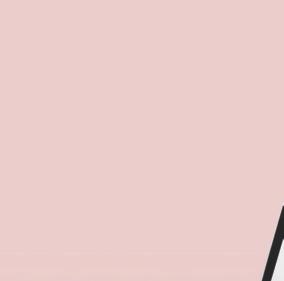




Voortgang bijhouden
Altijd je digiboek bij de hand
B� deze Examenbundel hoort een online omgeving: m�nexamenbundel.nl
Je vindt hier alles wat je nodig hebt om heel gericht te leren en oefenen voor je examen. Zoals de score van je oriëntatietoets, video’s, het digiboek, examentips en nog veel meer.
#ikgazekerslagen
Activeer direct je code voor Mijn Examenbundel
Ga nu naar m�nexamenbundel.nl en maak meteen je account aan. Met de activatiecode die je per mail hebt ontvangen of via de ELO van je school, heb je toegang tot alle extra’s die b� je boek horen.